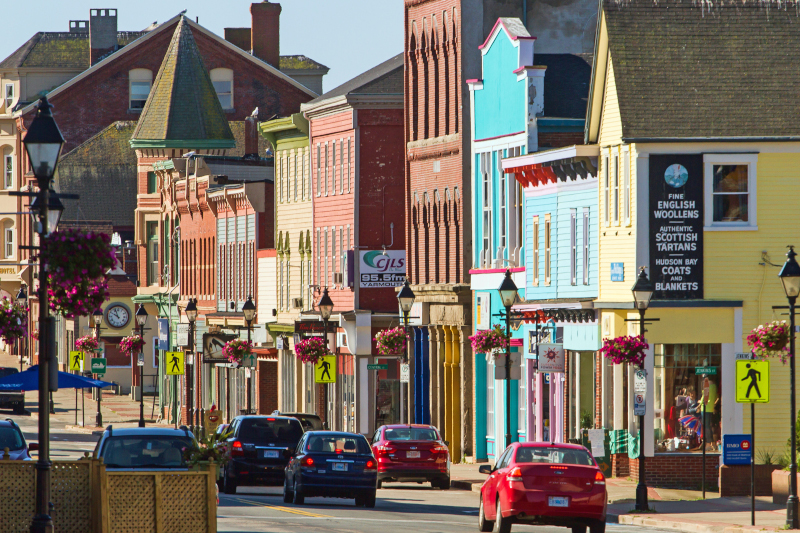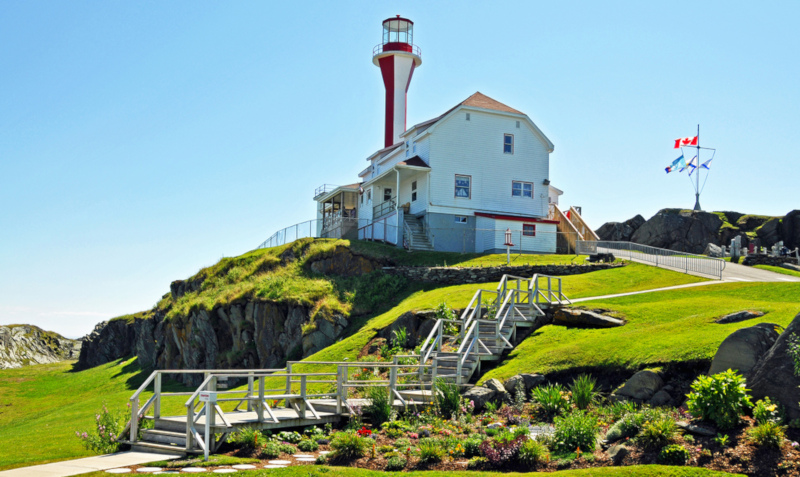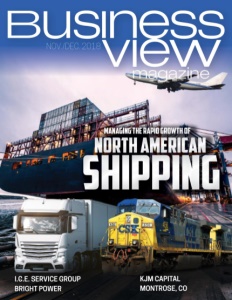Municipality of the District of Yarmouth, Nova Scotia
Truly connected
Business View Magazine interviews representatives of the Municipality of the District of Yarmouth, Nova Scotia for our focus on community development in Canada.
The Municipality of the District of Yarmouth, affectionately known as MODY by its 9600 residents, is a diverse collection of communities on the southern tip of Nova Scotia. The landscape is an endearing mix of four-season beauty with scenic hills, lakes, forests, and ocean vistas. Career opportunities abound in fishing, forestry, agriculture, light manufacturing, retail, personal and professional services, and creative arts. Celebrating global ethnicity, the Municipality of Yarmouth is an ideal place to put down roots, embrace work/life balance, and contribute to a lively, hard-working community.
The best way to get behind-the-scenes intel on a region’s economic strategy is to go to the source. With that in mind, Business View Magazine spoke with MODY representatives Victoria Brooks (CAO), Leland Anthony (Warden), and Mark Blinn (Economic Development Officer) for a first-hand overview of ongoing initiatives. The following is an edited transcript of that conversation.
BVM: What types of businesses are driving the economy in Yarmouth, Nova Scotia?
Brooks: “Council is very cognitive of our fishing, forestry, and agriculture sectors, but they also have an interest in using emerging technologies like green energy and bio-diversity to leverage those sectors for a new economic reality for our community. We still have some of the traditional processes and resource management techniques in place, but once something is harvested, there are new activities involved. Historically, we would ship off the raw product and be done with it. Now, we’re looking for ways to value add to it – we’ve come a long way in that regard, but there are obviously more gains to be made.
“We have seven commercial fishing wharves that have some supply chain clusters with the seafood industry. Where our landings come ashore, there are primary processing facilities and, in some places, advanced processing with private-label packaging and shelf-ready products leaving. With respect to farming, we have organic farming, small-scale commercial farming, and large-scale commercial farming. So, within that sector there’s a range of value-added processing happening. Our agricultural products include blueberries, apples, maple syrup, strawberries, honey, beef, and poultry that are exported globally.”
Anthony: “Over the last few years, the wine industry in Nova Scotia has really taken off, and three to five minutes inland, we have a micro-climate where conditions are ideal for growing grapes. That’s fortunate. Six years ago, we did a climate data survey; collected information on frost-free days, sunny days, etc. within southwest Nova Scotia. As a result, it came out that this area is one of the better places for growing grapes and berries because we have more frost-free days than other parts of the province. The Bay of Fundy – a natural wonder – keeps us at a constant temperature; not too hot, not too cold.”

Yarmouth Downtown
BVM: What investments has the Municipality made in infrastructure projects?
Brooks: “From a tourism and marketability prospect, our icon is the Cape Forchu lighthouse. That lighthouse was divested 20 years ago by the federal government, and the Municipality has invested heavily in remediation of the site, but also to turn it into a functioning tourist destination. In the last five years, we’ve invested about $600,000 in the project, including building a complete walking trail around the property that’s usable in every season. We have a non-profit operating the site and a for-profit operating the food service aspect. Recently, a major motion picture “The Lighthouse” was filmed there with Robert Pattison and Willem Dafoe. That is great PR for the region, as it will be seen around the world.
“This Council invests fairly heavily in trail and sidewalk development. We have quite a portion of the TransCanada Trail (the former rail beds) in our community and Council is trying to strategically build out walking infrastructure to leverage that trail. In the last five years, MODY has invested $1.6 million into that. On the green side of things, our nine-year-old Municipal building was constructed with many environmentally-conscious attributes. Most notably, we heat and cool with geothermal; interestingly, the field where those geothermal pipes are located has a community soccer pitch above it. We also undertook a $1.4 million project to retrofit our street lights to LED.
“In partnership with some other municipalities, we built a windfarm on MODY land. Our investment was $1 million. That project was completed two years ago, and we’ve done some analysis that shows we’re on track to have the ROI come ahead of the model that was forecasted. Another partnership we’re involved in is a big solar project with the Green Energy Committee. Solar is the next frontier.”
Blinn: “Much like any other municipality, we like to leverage funds, so we’ve got a lot of hopes and desires for green energy. Photovoltaic is a case in point. But we’d like to see the economic conditions be a bit better before we step into that area. On the wind farm property, there is a huge field that could house photovoltaic panels, as well. If something like that were to present itself, we might bite. It’s something we continually reassess to match our goals.”
BVM: Are shovel-ready projects part of your economic development strategy?
Brooks: “Definitely. One instance is the International Ferry Terminal at the Port, where the Nova Scotia-U.S. Ferry stops. The engineering has been done and we were shovel-ready when the financial opportunity arose to do Phase One redevelopment at that terminal. The primary reason for it is to meet Canada Border Services Agency standards, but also to upgrade to existing marine travel processes. MODY’s investment in Phase One will be $1.2 million. It’s a $10 million project that we’re share costing with the Town of Yarmouth, the Municipality of Argyle, the Province of Nova Scotia and the Government of Canada. Altogether, the multi-phase redevelopment will require a $25 million investment.”
Leland: “The end result is increased capacity for a service provider to operate a ferry service; it opens up alternatives for different types of equipment at the Port and allows for better traffic flow to get people processed faster. Because it’s an international entry point to Canada, it has all the dynamics that need to be accommodated for that. But it’s worth it. For us, increased access means more people and more dollars coming in.”
Brooks: “Another smaller-scale, shovel-ready project we’re working on is at the Lake Milo Boat Club, which we jointly operate with the Town of Yarmouth, Nova Scotia. It’s been 20 years since the Club had major upgrades, so we have the audit ready and when the funding becomes available we can address accessibility and comfort issues such as washrooms.”

Cape Forchu Lighthouse
BVM: What is the Immigration Pilot Project?
Brooks: “Seven municipalities partnered in the Western Region Enterprise Network (WREN) to create a pool of funding. The province matched that and created a regional economic development entity that houses the Atlantic Immigration Pilot Project for this area. The AIP is focused on employers and is part of the response to the talent shortage we’re experiencing, just like every other market. On our spectrum, we’re skewed heavily to one side; we have a disproportionate number of PhD levels based on our population but, because we’re a resource-based economy, we have a lot of middle and low-end technical skill positions available and it’s hard to fill them.
“There’s a certain amount of seasonality and that’s a challenge. But most employers are trying to create a 52-week production schedule, so they can retain talent because they need it for their business cycle. As for training, we’re home to a campus of Nova Scotia Community College, where they just announced a new ICT incubation hub called Ignite Labs. So, that’s a positive prospect for entrepreneurial talent in the future.”
When asked to describe the best features of MOBY, representatives Brooks, Anthony, and Blinn offered this collaborative summation that says it all beautifully:
“The Municipality of Yarmouth, Nova Scotia continues to flourish because of the people who live here. Fishing is our economic base but connection to the land through farming and forestry diversifies our economy with newly developed opportunities in grape growing, organic food production, and renewable energy. This diversification brings economic development possibilities perhaps not thought of in the past and limitless in the future.
“We continue to invest in improved internet for remote communities, enabling residents and businesses to fully participate in the digital economy, while enjoying the natural beauty and outstanding outdoor activities that attract visitors to our area every year. Our proud tradition of history is showcased in our museums, galleries, and lifestyle.
Life here is one of opportunity, unlimited potential as a business owner and a business investor, yet relaxed and simple – the best of both worlds. All these factors continue to attract our richest resource – people! We are a diverse community sharing a wide variety of gifts, talents, and interests.”
Check out this handpicked feature on City of Lackawanna, New York – Steeled for a bright new future.
AT A GLANCE
WHO: Municipality of the District of Yarmouth, Nova Scotia
WHAT: Municipal district; population 9600
WHERE: Yarmouth County, southern Nova Scotia
WEBSITE: www.district.yarmouth.ns.ca

